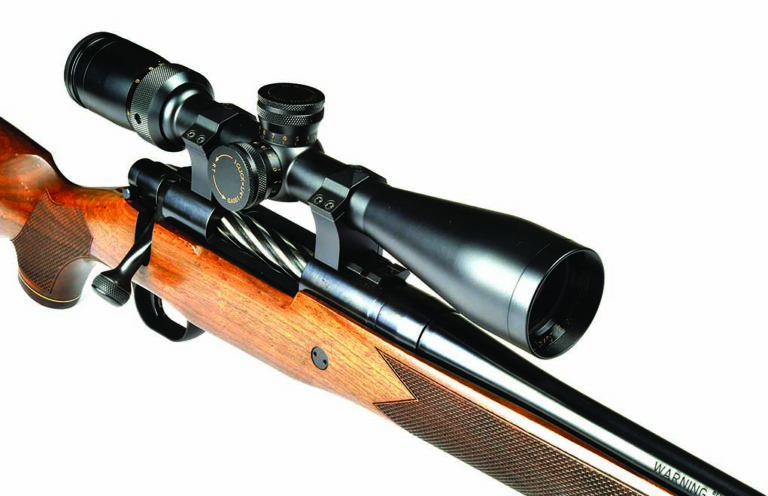
Chambered in 6.5 Creedmoor, Mossberg’s Patriot Revere rifle combines old-school good looks with high-ballistic-coefficient performance — at a price the masses can afford.
What makes the Mossbert Patriot Revere Stand Out Among Bolt-Actions:
- European walnut stock.
- Laser-cut checkering.
- Rosewood grip cap and forend tip.
- Flutted bolt.
- Lightning Bolt-Action trigger.
- MSRP of $823
There’s something special about hunting rifles made of polished, blued steel and high-grade walnut stocks executed in the classic fashion. That combination goes together like a warm campfire and a fine, single-malt whisky, and it’s increasingly difficult to find in factory production rifles.
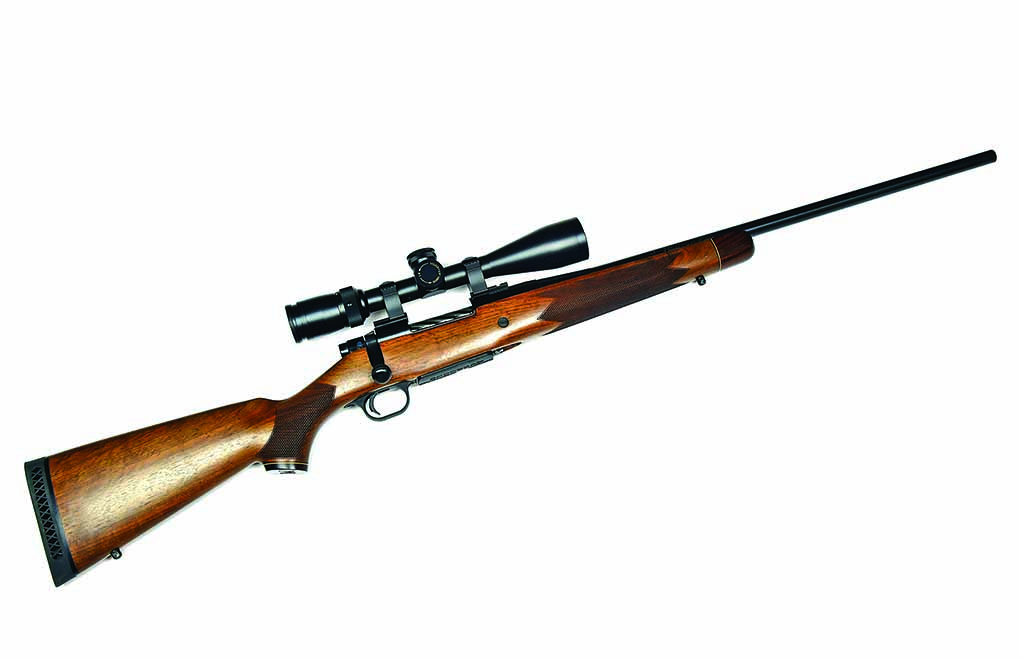
In a market dominated by ubiquitous black synthetic stocks and a rush to embrace all things tacticool, such rifles evoke a more genteel time when custom stock makers were much in demand and their products were viewed not just as functional tools, but as works of art.
Today, regrettably, such rifles often come with hefty price tags. Mossberg has challenged that status quo with the Patriot Revere, one of the newest — and nicest — versions of the company’s affordable Patriot line of rifles. The Revere has been around for a couple of years now, but it was newly chambered for the 6.5 Creedmoor for 2018, creating what may be a nearly perfect blend of old and new. Perhaps the most remarkable thing about the eye-catching Revere is the fact that Mossberg brought it to market at a price that’s well below the cost of most similarly appointed guns — and below the price of wood-stocked flagship models from the likes of Remington, Ruger and Winchester.
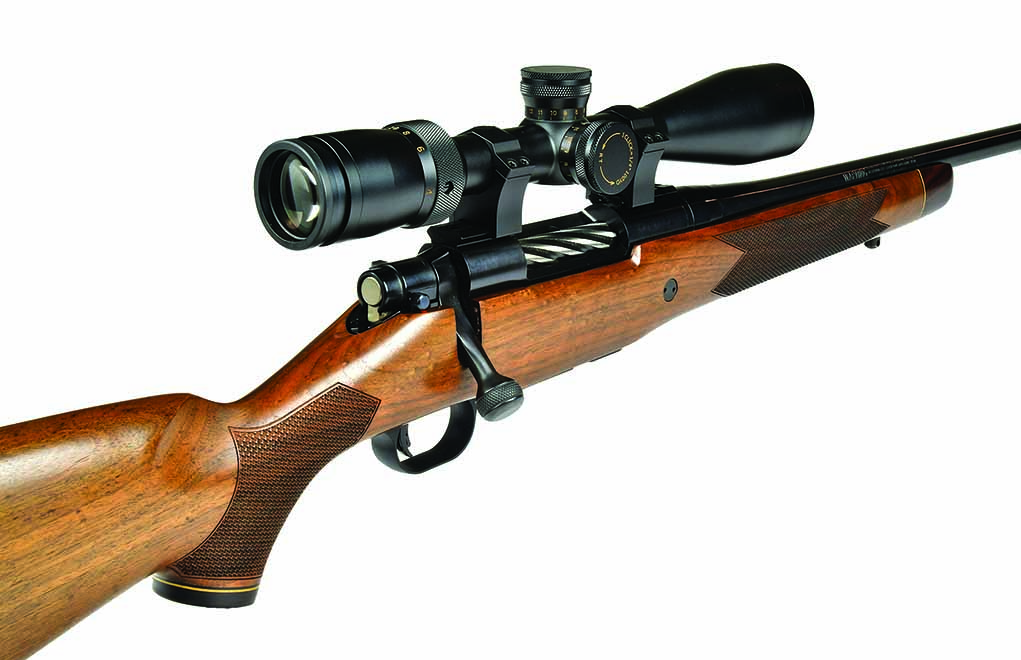
While Patriot rifles are generally thought of as economy rifles, with a MSRP starting at $441 for the synthetic-stocked Predator model, the Revere represents the top of the line. Even a cursory glance tells you the Revere is a cut above the norm, and a rifle that any hunter should be proud to own. It has a MSRP of just $823. With a real-world price below that, here’s a closer look at what you’ll get for your money.
Head-Turning Good Looks
The first thing you’ll notice about the Revere is its oil-finished European walnut stock, of a grade Mossberg calls Premier 2.0, which is a definite step up from wood stocks found on most factory production rifles these days. It has fine-line, laser-cut checkering on the grip and forend, and it’s adorned with a rosewood grip cap and forend tip. These are nicely set off by thin, contrasting maple spacers. It also has a very well-fitted ¾-inch recoil pad set behind a black spacer.

The net result is a decidedly retro look matched to a stock design with clean, straight lines. In this regard, it seems to borrow a bit from Winchester, Weatherby and Remington rifles of yesteryear. If those firearms contributed their DNA to a bullet-slinging offspring, I imagine this is what it would look like.
More Rifle Articles:
- Weatherby’s Krieger Custom Rifle
- Aussie-Style Accuracy With The Lithgow LA102
- 5 Articles On The 6.5 Creedmoor You Must Read
- Best Precision Rimfire Rifles Guaranteed To Own The Bullseye
- AR-10 vs. AR-15: How Stoner’s Rifles Stack Up
A machined, tubular receiver is mated to a 24-inch sporter-profile barrel. Both have a lustrous, deep blue finish. The barrel has a recessed target-style crown not always seen on rifles in this price category. Mounting scopes is a cinch because the rifle ships from the factory with Weaver-style bases already installed.

In a nod to contemporary styling, the bolt has deeply cut, elegant black spiral flutes. The bolt fluting is aesthetically pleasing to my eye, but it also has a couple of practical benefits: Reducing weight is one, and the other is an exceptionally slick-cycling bolt. It is, in a word, smooth. The bolt is not a one-piece design. Rather, it is assembled from three components: the handle, body and head. The bolt head, which uses two substantial locking lugs, has a traditional plunger ejector and Sako-style extractor. The bolt handle is knurled for a firm grip.
This brings us to one component of the rifle I was somewhat less-than-pleased with: The bottom metal isn’t metal. It’s polymer. I know that’s part of the reason Mossberg can price the rifle so affordably, but I found myself wishing the company could have gone the extra step and used metal, even if it did add a bit of cost and weight to a 7-pound rifle.

You’ll also find a polymer component sliding into the bottom of the action in the form of a detachable box magazine. While I would’ve been perfectly happy with a hinged metal-floorplate magazine design, I generally prefer detachable magazines to be of the metal variety. Lest I be accused of succumbing to grouchy old hunter syndrome, I do recognize the weight-saving properties and durability of current-generation polymer magazines. I just prefer metal as a purely personal preference.
The magazine clicks firmly into place in the magazine well and drops freely into the hand when you operate the magazine release lever, which is protected against accidental tripping by being recessed into the bottom of the stock.
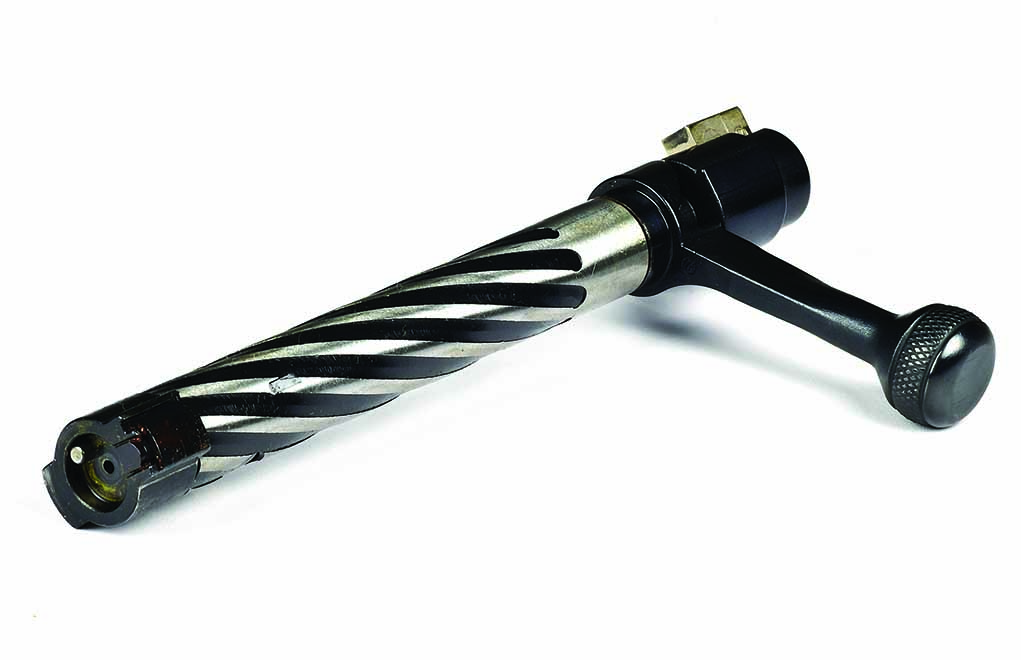
locking lugs and deep spiral
fluting. Cycling is
exceptionally
smooth.
The magazine well is also made of polymer, and extends on its top side into two tabs, which actually form part of the bedding system for the rifle as the action screws pass through these tabs to secure the action to the stock of the rifle.
The Savage-esque LBA (Lightning Bolt Action) trigger on the Revere had just a hint of barely-noticeable creep, but it didn’t bother me because it was predictable and consistent. Don’t take that as a criticism, for it’s still a much nicer trigger than many found on guns in this price range. Although you can adjust the trigger within a pull-weight range of 2-7 pounds, I left it as it arrived from the factory for testing. Dry-firing it for the first time, I discovered, with what might have been the sound of the Hallelujah chorus playing in my head, that the trigger broke at an average pull weight of 2 pounds, 9 ounces. I’ve tested far too few factory rifles in the past several years that come with a trigger this good.
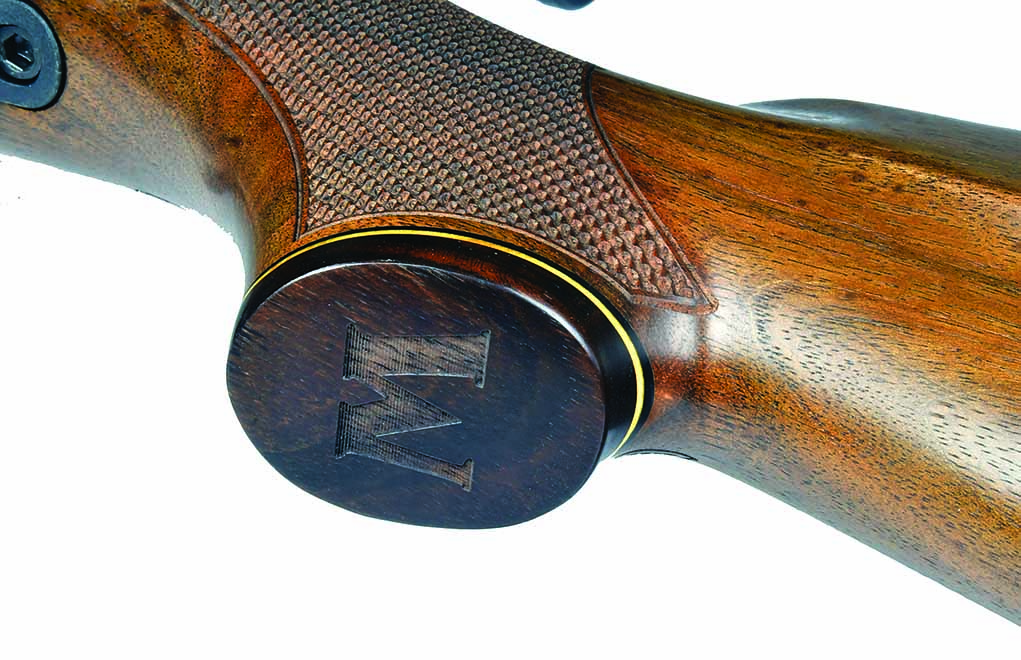
You’ll find the rifle’s safety lever located on the right side of the receiver just behind the top of the bolt handle, within easy reach of the thumb when the rifle is gripped in a shooting position. The safety is a two-position design and is disengaged when pushed to the forward “fire” position. When the safety is engaged, in the rearward position, the bolt is not locked down. This allows you to cycle rounds through the action with the safety in the “on” position.
Functionally, everything on the rifle worked exactly as it should. Operation was instinctive and automatic, as it should be with any good rifle. I found it easy to load rounds into the magazine, and they fed, fired, extracted and ejected without skipping a beat.
Performance When It Counts
All things considered, the Revere is a great-looking rifle that you can buy at a great price. But would its beauty prove to be more than skin-deep? To find out, I mounted atop the rifle an old favorite, a Weaver Super Slam 2-10x42mm rifle scope, which I’ve long favored for testing rifles with great confidence that the scope will hold up to sustained shooting sessions.
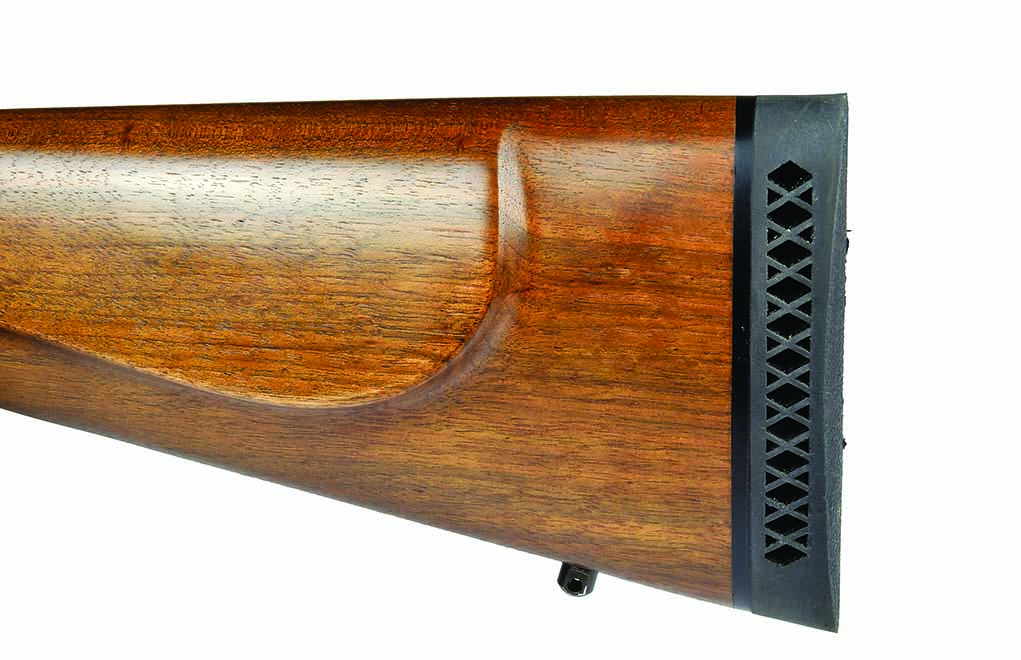
Since the rifle is purely designed for hunters, I tested it with five different 6.5 Creedmoor factory hunting loads, measuring velocities over a Competitive Edge Dynamics M2 chronograph. Velocities were quite close to factory advertised velocities with one exception: The Federal Big Game Trophy Copper 120-grain load stepped out 103 fps faster than the factory number. This was the only load tested with an all-copper bullet, and the Revere didn’t seem overly fond of it, turning in average five-shot groups of 1.70 inch.
The rifle did better with the other four tested loads, producing average groups of under an inch and a half, with best groups running just slightly over an inch. The best performance was with the hottest round tested, Hornady’s Superformance load with a 129-grain SST bullet, which clocked in at 2,953 fps. Average groups with this load were 1.23 inch, with a best group of 1.13 inch. Two other tested loads matched that best-group size exactly.

But these five-shot groups only tell part of the story. The rifle had a pronounced tendency to group the first three shots in a string tightly, with shots four and five opening groups up a bit, which is to be expected with a sporter-weight barrel as it heats up.
To satisfy my curiosity, I took note of where the first three shots went in each group. Measuring only these, four out of five tested loads produced sub-MOA average results, with best groups for those loads running under half an inch. That’s the kind of accuracy I’ve come to expect with good rifles chambered for the inherently accurate 6.5 Creedmoor cartridge, and it’s all the accuracy you should ever need in a hunting rifle.
In a lifetime of hunting, I can’t ever recall encountering a deer dumb enough to hang around while someone shot at it five times. It’s the first shot that counts, and sometimes the second — but if you haven’t dropped that buck with the third shot, I’d wager you won’t do it with the fifth.
With a competent shooter behind the trigger, the Patriot Revere will perform when it counts, and look great doing so.
Brush Up on Your Creedmoor 6.5 Knowledge
- Best 6.5 Creedmoor AR Rifles for Accuracy and Versatility
- Exploring the Best 6.5 Creedmoor Complete Uppers for AR Rifles
Editor's Note: This article originally appeared in the October 2018 issue of Gun Digest the Magazine.

Next Step: Get your FREE Printable Target Pack
Enhance your shooting precision with our 62 MOA Targets, perfect for rifles and handguns. Crafted in collaboration with Storm Tactical for accuracy and versatility.
Subscribe to the Gun Digest email newsletter and get your downloadable target pack sent straight to your inbox. Stay updated with the latest firearms info in the industry.

![Best Concealed Carry Guns In 2025 [Field Tested] Wilson Combat EDC X9S 1](https://gundigest.com/wp-content/uploads/Wilson-Combat-EDC-X9S-1-324x160.jpg)


![Best 9mm Carbine: Affordable PCCs [Tested] Ruger Carbine Shooting](https://gundigest.com/wp-content/uploads/Ruger-Carbine-Shooting-100x70.jpg)
![Best AR-15: Top Options Available Today [Field Tested] Harrington and Richardson PSA XM177E2 feature](https://gundigest.com/wp-content/uploads/Harrington-and-Richardson-PSA-XM177E2-feature-100x70.jpg)
